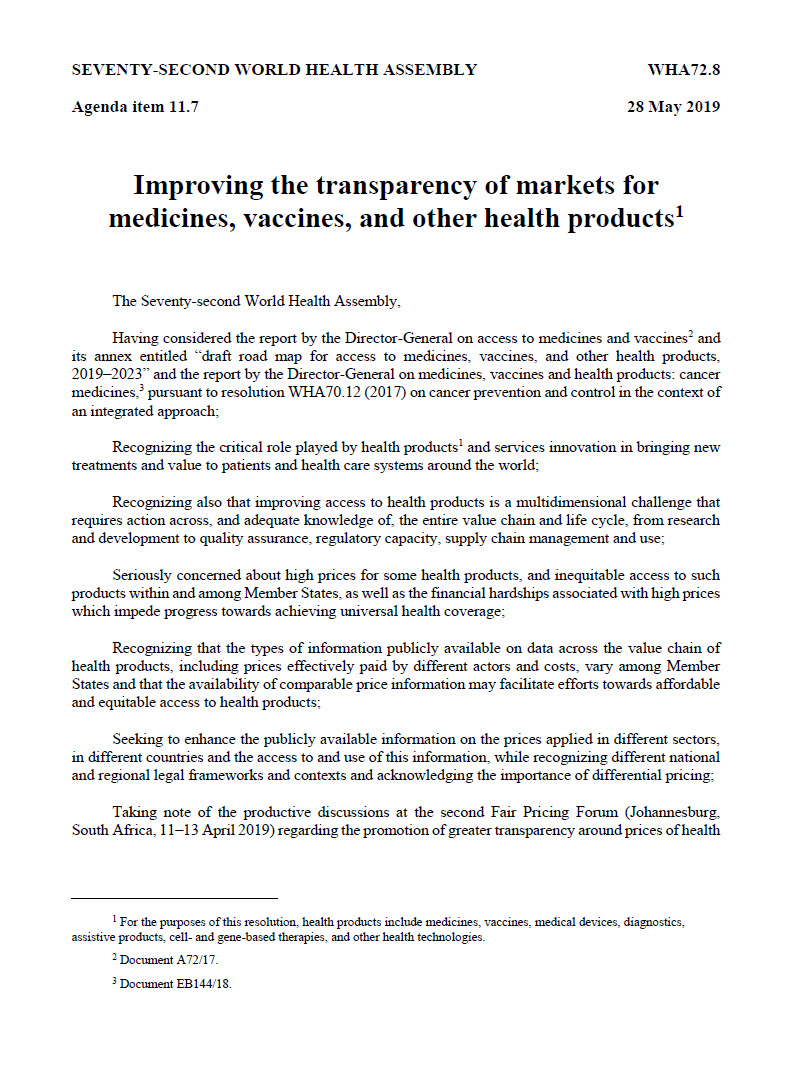2019 WHA Resolution on improving the transparency of markets for medicines, vaccines, and other health products
Used as precedent
access to health products, pharmaceutical transparency
“Noting the importance of both public- and private-sector funding for research and development of health products, and seeking to improve the transparency of such funding across the value chain” (p. 2)
“Seeking to progressively enhance the publicly available information on inputs across the value chain of health products, the public reporting of the relevant patents and their status, and the availability of information on the patents landscape covering a particular health product as well as its marketing approval status” (p. 2)
“1. URGES Member States in accordance with their national and regional legal frameworks and contexts:
(1) to take appropriate measures to publicly share information on the net prices2 of health products;
(2) to take the necessary steps, as appropriate, to support dissemination and enhanced availability of, and access to, aggregated results data and, if already publicly available or voluntarily provided, costs from human subject clinical trials regardless of outcomes or whether the results will support an application for marketing approval, while ensuring patient confidentiality;
(3) to work collaboratively to improve the reporting of information by suppliers on registered health products, such as reports on sales revenues, prices, units sold, marketing costs, and subsidies and incentives;
(4) to facilitate improved public reporting of patent status information and the marketing approval status of health products;
(5) to improve national capacities, including through international cooperation and open and collaborative research and development and production of health products, especially in developing countries and low- and middle-income countries (LMICs), including health products for the diseases that primarily affect them, as well as for product selection, cost-effective procurement, quality assurance, and supply chain management” (p. 2)
